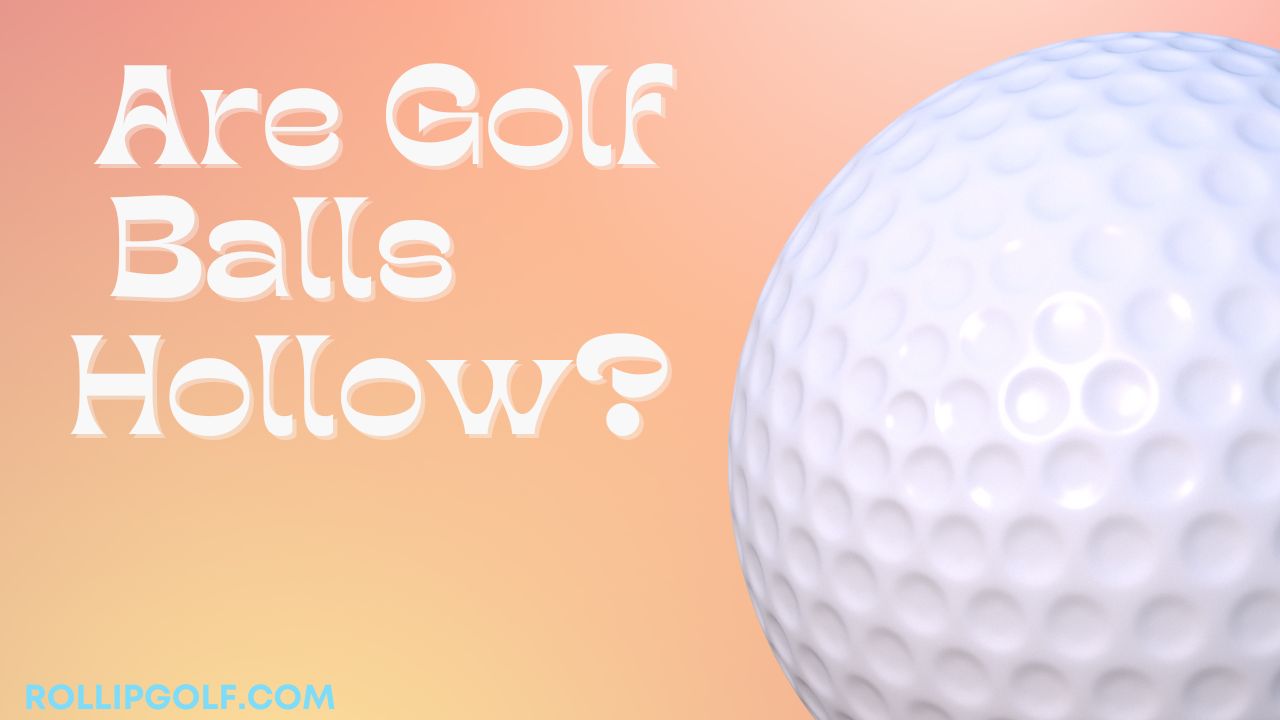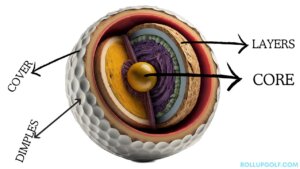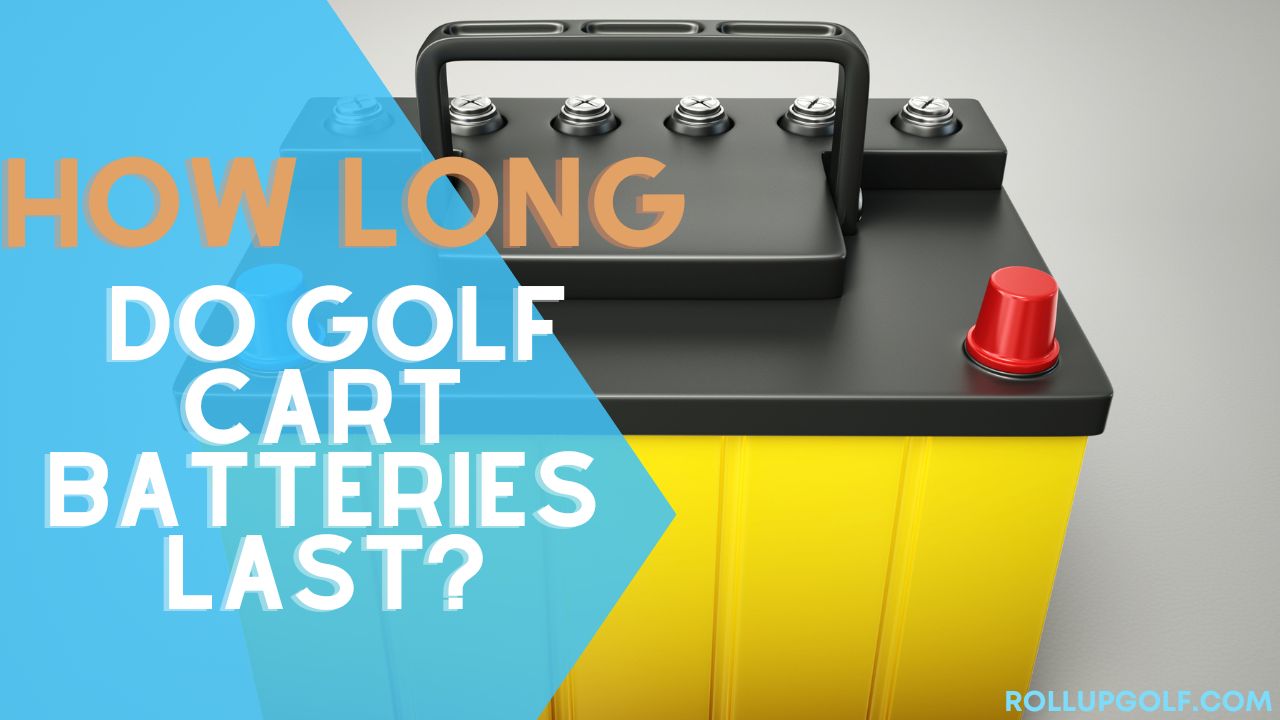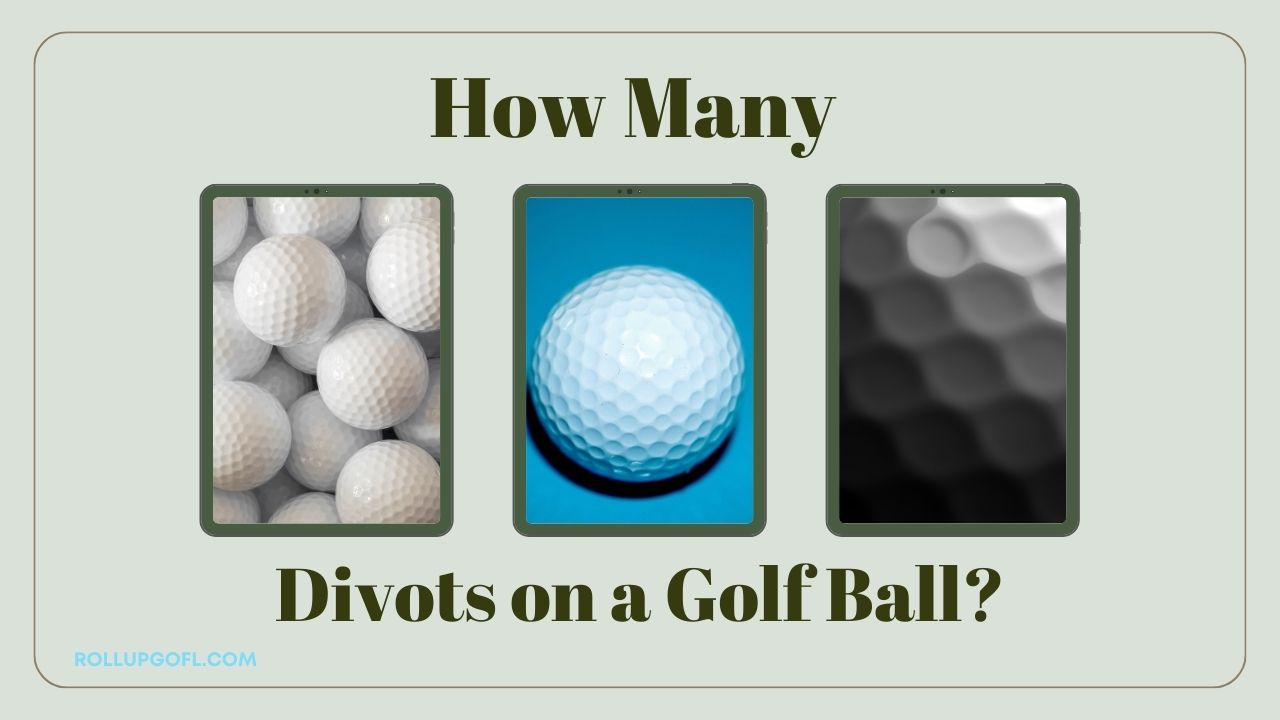
Golf, a game of precision and skill, relies heavily on the equipment used, with the golf ball being a crucial component. One common question that arises is whether golf balls are hollow. Let’s delve into the intricacies of golf ball construction to uncover the truth.
Read also: How Much is a Used Golf Cart?
Are Golf Balls Hollow?
No, standard golf balls are not hollow. They are quite complex little spheres with multiple layers designed to achieve specific performance characteristics. Here’s a breakdown of what’s inside:
- Core: This is the innermost layer, usually made of synthetic rubber or polybutadiene. It provides distance and feel by compressing and rebounding during impact.
- Inner Mantle: This layer surrounds the core and is typically made of softer ionomer or Surlyn. It helps control spin and feel.
- Outer Mantle: This firmer layer, often made of nylon or DuPont Surlyn, contributes to distance and durability.
- Cover: The outermost layer, made of urethane or balata, provides grip and spin, affecting trajectory and control. It also has the dimples you see on the surface, influencing airflow and lift.
While practice balls specifically designed for indoor use or beginners might be hollow to limit flight distance and prevent damage, regular golf balls used for playing the game are solid. Their intricate construction is what allows them to fly long and straight, respond predictably to different shots, and withstand the rigors of the course.
What Are Golf Balls Made Of?

Sure! Modern golf balls are marvels of engineering, packed with multiple layers of different materials, each playing a crucial role in the ball’s performance. Here’s a breakdown of the key components:
1. Core:
- Material: Usually synthetic rubber or polybutadiene.
- Function: Provides distance and feel by compressing and rebounding during impact. It’s like the energetic heart of the ball.
2. Inner Mantle:
- Material: Typically softer ionomer or Surlyn.
- Function: Helps control spin and feel, adding a layer of finesse to the core’s power.
3. Outer Mantle:
- Material: Firmer nylon or DuPont Surlyn.
- Function: Contributes to distance and durability, ensuring the ball can withstand the wear and tear of the course.
4. Cover:
- Material: Urethane or balata.
- Function: Provides grip and spin, affecting trajectory and control. It also has the dimples you see on the surface, influencing airflow and lift. This is the outer shell that interacts with the club and the environment.
The specific materials and construction of each layer can vary depending on the type of golf ball and its intended performance characteristics. For example, balls designed for distance may have a larger core and a thinner cover, while balls designed for control may have a smaller core and a thicker cover.
Here are some additional interesting facts about golf ball materials:
- The dimple pattern on the cover is crucial for lift and stability during flight. Different dimple patterns can produce different flight characteristics.
- The type of cover material can also affect spin. Urethane covers provide more spin than Surlyn covers, but they are also more expensive.
- The cores of modern golf balls are much more resilient than the cores of older balls. This is why modern balls can travel much further.
I hope this helps!
Read also: How to Remove the Speed Limiter on Electric Golf Cart?
The Core of a Golf Ball
At the heart of every golf ball lies its core. The core is the central component responsible for the ball’s compression and initial velocity upon impact. Cores can vary in composition, ranging from solid rubber cores to complex multi-layer constructions.
Cover Layers
The cover of a golf ball serves to protect the core and influence its interaction with the clubface. Golf ball covers are typically made from materials such as Surlyn, urethane, or balata. Each material offers different characteristics, affecting spin, feel, and durability.
Aerodynamics of Golf Balls
The dimpled surface of a golf ball plays a crucial role in its aerodynamics. Dimples help reduce air drag, allowing the ball to fly farther and more accurately. Understanding aerodynamics is key to optimizing golf ball performance.
Advantages of Hollow Golf Balls
When it comes to standard golf balls used for playing the game, they are not hollow and offer no practical advantages as such. Their intricate, multi-layered construction is essential for achieving optimal distance, control, spin, and durability. However, in specific situations, hollow balls can exist and offer some limited advantages:
Practice Balls:
- Safety: Hollow practice balls used indoors or by beginners fly shorter distances, minimizing damage and potential injury.
- Cost: Often cheaper than regular balls, making them ideal for practice and learning.
- Durability: Lighter construction can make them more dent-resistant than solid practice balls.
Specialized Balls:
- Distance Control: Specific types of hollow balls designed for slower swing speeds or indoor training might help control distance for some players.
- Feel: Some claim a softer feel on impact with hollow practice balls, although this can be subjective.
However, it’s important to note that most of these advantages come with significant downsides:
- Performance: Hollow balls lack the core compression and multi-layer technology that optimizes distance, spin, and feel in regular balls.
- Feedback: They may not provide accurate feedback on swing mechanics or shot quality compared to real balls.
- Limited Use: Their benefits are mainly limited to specific practice scenarios and don’t translate to actual gameplay.
Overall, unless you have a specific need for safety, cost, or limited distance control in practice, using solid, high-quality golf balls offers better performance and feedback for improving your game.
Hollow vs Solid Construction
The debate between hollow and solid construction in golf balls revolves around the core design and its impact on performance. Let’s delve deeper into the differences between these two constructions:
Solid Construction:
Solid construction refers to golf balls with a core that is uniformly solid throughout. Traditionally, golf balls were predominantly of solid construction, with the core typically made of solid rubber. Solid construction offers stability and consistency in ball flight, making it a popular choice among golfers seeking reliability.
Advantages of Solid Construction:
- Consistency: Solid construction provides predictable performance, especially in terms of distance and trajectory.
- Durability: Solid cores are less prone to damage, ensuring longevity and reliability over multiple rounds of play.
- Feel: Some golfers prefer the feel and feedback offered by solid construction, especially on shorter shots and putts.
Drawbacks of Solid Construction:
- Limited Customization: Solid cores may offer less room for customization compared to multi-layered designs, limiting the ability to fine-tune performance characteristics.
- Potential for Distance Sacrifice: While solid construction offers stability, it may sacrifice some distance compared to hollow designs optimized for maximum ball speed.
Hollow Construction:
Hollow construction involves a core that is partially or entirely hollow, allowing for weight redistribution and optimization. Modern advancements in materials and manufacturing techniques have enabled the creation of hollow cores with intricate designs aimed at maximizing distance and control.
Advantages of Hollow Construction:
- Weight Distribution: Hollow cores allow for precise weight distribution, optimizing launch conditions and maximizing ball speed for increased distance.
- Customization: Manufacturers can adjust the thickness and placement of materials within the hollow core to fine-tune performance characteristics such as spin rates and launch angles.
- Innovative Design: Hollow construction opens the door to innovative designs that push the boundaries of performance, leading to advancements in aerodynamics and overall ball flight.
Drawbacks of Hollow Construction:
- Durability Concerns: Hollow cores may be more susceptible to damage from impacts, especially with high swing speeds, potentially affecting the longevity of the ball.
- Feel: Some golfers find that hollow construction lacks the same feel and feedback as solid construction, particularly on delicate shots around the green.
Drawbacks of Hollow Golf Balls
Despite their advantages, hollow golf balls may face durability concerns due to their construction. Additionally, some golfers find that hollow balls lack the same feel and feedback as their solid counterparts.
Are Modern Golf Balls Hollow?
No, modern golf balls used for official gameplay are not hollow. As you accurately pointed out, they are constructed with multiple layers of different materials specifically designed to achieve optimal performance characteristics, including distance, control, spin, and durability.
The misconception about hollow golf balls might stem from:
- Practice balls: Some practice balls designed for indoor use or beginners are indeed hollow. This helps limit their flight distance and prevent damage in confined spaces. However, they lack the performance features needed for actual gameplay.
- Outdated information: Older golf balls, pre-dating modern advancements, might have employed hollow designs to achieve specific properties. However, these are not relevant to contemporary golf ball technology.
Here’s a quick recap:
- Regular golf balls: Solid, multi-layered construction for optimal performance.
- Practice balls: Can be hollow, focusing on safety and cost for limited practice scenarios.
- Modern golf ball technology: Relies on solid construction for superior performance.
I hope this clarifies any ambiguity and provides a more accurate understanding of modern golf ball design. Feel free to ask any further questions you might have!
The Myth of the Hollow Golf Ball
While it’s true that golf balls compress upon impact, they are far from hollow. A hollow golf ball would lack the structural integrity needed for optimal performance. The multi-layered construction of modern golf balls is carefully engineered to provide the ideal combination of distance, control, and durability.
Can golf balls rot?
Technically, no, golf balls don’t “rot” in the same way organic materials like food do. They lack the necessary components for the biological processes involved in rot. However, they do degrade over time, albeit very slowly. Here’s the breakdown:
Breakdown, not rot:
- Materials: Modern golf balls are composed primarily of synthetic materials like rubber, plastic, and ionomers. These materials are resistant to natural decomposition by bacteria and fungi.
- Degradation process: While they won’t rot, the materials in golf balls can break down through different processes. Sunlight, heat, and physical damage can cause them to become brittle, crack, or lose their shape. The rubber core can gradually oxidize and lose its elasticity, impacting performance.
- Timescale: This degradation happens extremely slowly. Estimates suggest it can take anywhere from 100 to 1,000 years for a golf ball to completely decompose!
Impact on the environment:
Due to their long lifespan, lost golf balls contribute significantly to plastic pollution in landfills, waterways, and even marine environments. This presents ecological concerns as they can harm wildlife and release harmful chemicals during breakdown.
Alternatives:
Thankfully, eco-friendly options are emerging! Biodegradable golf balls are gaining popularity, breaking down much faster, and posing less environmental threat.
TLDR:
- Golf balls don’t rot like organic matter.
- They degrade slowly due to sunlight, heat, and physical damage.
- This process takes centuries, creating concerns for the environment.
- Biodegradable alternatives are becoming available.
I hope this clarifies the situation!
Read also: Golf cart
Conclusion
In conclusion, while golf balls are not typically hollow in the traditional sense, modern advancements have introduced elements of hollow construction to optimize performance. Understanding the intricacies of golf ball design can help golfers make informed decisions when selecting equipment.
FAQs
- Are all golf balls made the same way?
- No, golf balls can vary significantly in construction and materials, leading to differences in performance.
- Do hollow golf balls break easily?
- Hollow golf balls may be more prone to damage compared to solid ones, but advancements in materials and manufacturing techniques have improved durability.
- Can hollow golf balls be used in professional tournaments?
- The rules of professional golf allow for a wide range of golf ball constructions, provided they meet specific performance criteria.
- Do hollow golf balls fly farther than solid ones?
- Hollow golf balls have the potential to achieve greater distances due to optimized weight distribution, but individual performance may vary based on factors such as swing speed and technique.
- Are hollow golf balls suitable for beginners?
- Beginners can experiment with various types of golf balls to find the ones that best suit their skill level and preferences, including hollow options.








